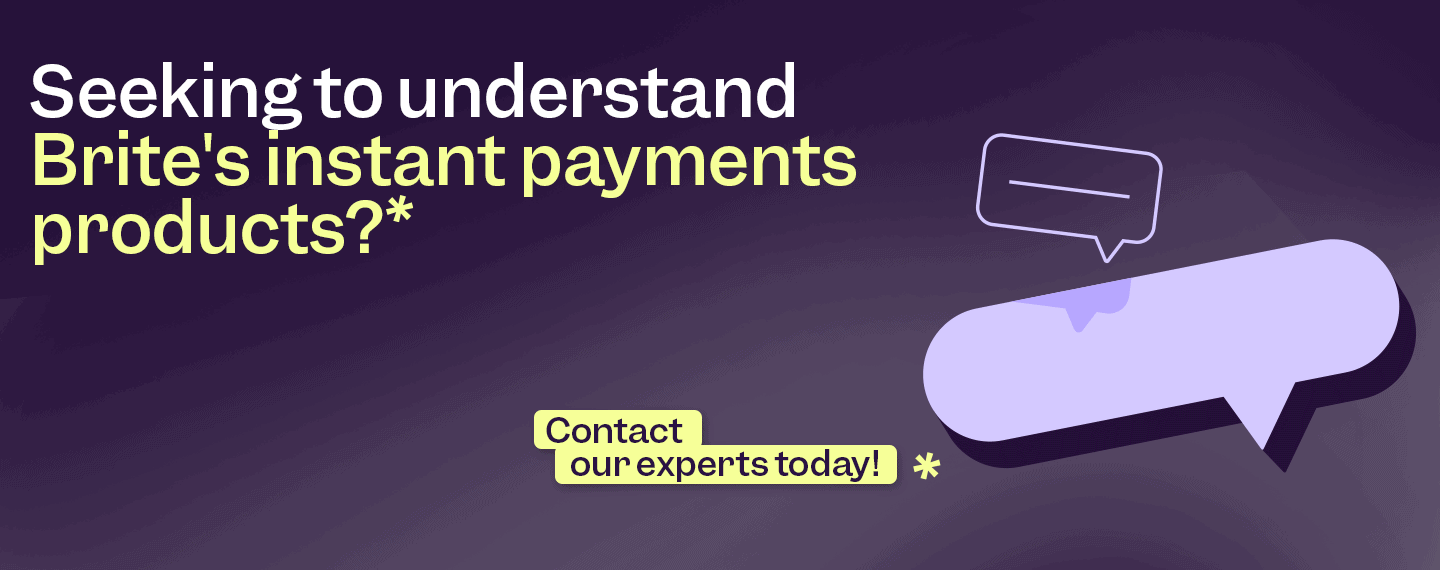
Subscriptions are playing an increasingly prominent role in the business landscape – a tendency known as the subscription economy. In fact, our 2024 Instant Economy Payment Insights report found that 27% of all respondents had taken out a digital subscription in the last six months.
The subscription economy is the trend of companies shifting to a subscription-based business model. This model is not about delivering a specific product or service to as many customers as possible: it’s about how consumers get value out of subscribing to a product or service.
In this article, we’ll cover what the subscription economy is, how it’s changing the way people buy, and how open banking is helping meet its payment challenges.
Topics we will discuss include:
- What is the subscription economy?
- The three main types of subscriptions
- The shift: How the new subscription economy is changing the way people buy
- Relationships over transactions: Growth in the subscription economy
- Is the subscription model the right option for your business?
- How can open banking benefit the subscription economy?
What is the subscription economy?
The subscription economy is a concept originating from Zuora’s Subscription Economy Index. The term refers to the trend of companies shifting their traditional pay-per-product model to a subscription-based business model.
A subscription-based business model involves selling recurring subscriptions to consumers in exchange for ongoing access to a product or service.
Examples of subscriptions include:
- Streaming services such as Netflix and Spotify
- Software as a Service (SaaS) such Microsoft Office or Adobe
- Physical products such as monthly book subscription boxes, wine selections, coffee, or meal boxes
Although subscriptions also count as physical products, the subscription economy is fuelled largely by the rise of digital technology and the fact that many media items that once had to be purchased in physical form can now be downloaded or streamed.
The three main types of subscriptions
There are three primary types of subscriptions in the subscription economy: the replenishment subscription model, the access subscription model, and the curation subscription model.
Replenishment subscription model
The replenishment subscription model gives customers regular, automated deliveries of products they use regularly and need to replenish consistently. Examples include:
- Dollar Shave Club (razor blades)
- HelloFresh (meal kits)
- Amazon Subscribe and Save (household essentials, pet food, vitamins)
The replenishment model offers convenience and predictability – and often a small discount for loyalty. It’s a model that plays on consumer habits: once a product becomes part of their routine, they’re less likely to switch.
This model can come with certain challenges, including managing churn if customers feel overstocked and maintaining product quality and the freshness of perishables.
Access subscription model
With the access subscription model, customers pay a recurring fee for the right to access a service, product range, or exclusive benefits, rather than individual items. Examples include:
- Netflix, Disney+ (streaming content)
- Spotify, Apple Music (music streaming)
- ClassPass (fitness class access)
The access model provides a sense of exclusivity, flexibility, and cost efficiency for people who value access over ownership. It’s most commonly seen in digital services and memberships, but can also apply to physical products – e.g. Pret A Manger’s Coffee Subscription, which lets you pick up a number of hot drinks every day.
It’s a great model, though it requires delivering consistent value to prevent cancellations and balancing tiered pricing with content/service availability.
Curation subscription model
With the curation model, customers pay to receive a personalised or themed selection of products on a recurring basis – a great way to discover new or niche items. Examples include:
- Book of the Month Club
- Birchbox (beauty products)
- Geek Crate (geek and gamer gear)
The curation model taps into the excitement of discovery, surprise, and personalisation – it’s great for people who enjoy the anticipation of the unknown combined with the sense of a tailored experience.
For businesses, however, this model comes with high logistical and inventory management demands, and the pressure of continually surprising and delighting customers tends to be higher.
The shift: How the new subscription economy is changing the way people buy
The popularity of the subscription model is highly consumer-driven. Consumers and businesses alike are increasingly choosing subscriptions over pay-per-product models.
In our 2024 Instant Economy Payment Insights report, we found that 27% of respondents had taken out a digital subscription in the past six months, with 36% of regular Daily and Weekly Pay by Bank users doing so.
With both businesses and consumers preferring subscribing to services rather than buying products, moving to a subscription-based business model is increasingly becoming the logical choice for many businesses.
Such a shift, however, requires changes within your organisation, how you sell, and how you present the value that your products and services provide.
Relationships over transactions: Growth in the subscription economy
Subscription-based companies typically get the majority of their revenue after customers subscribe to their service – not from the initial sign-up.
With customers contributing more and more to the bottom line over time, the subscription economy has essentially flipped revenue generation on its head. In order to grow, a subscription-based business must focus on customer relationships over transactions.
A subscription-based model is not product-focused but people-focused. It requires a shift in how companies view their product experience:
- Access over ownership: Subscribers are not looking to gain ownership of a product – they simply want access to it. Access allows for more flexible consumption, giving customers the freedom to scale up or down as needed.
- Customisation over generalisation: In a people-focused model, generalisation is not enough. Users will choose products and services that can be tailored to their preferences. Customisation is key.
- Improvement over obsolescence: A transaction-based business model often relies on planned obsolescence. Subscriptions, however, are about constant improvement. You want customers who will remain loyal to your solution because they know it evolves to fit their needs.
- Responsiveness over perfection: Nurturing lasting customer relationships in a subscription-based model is not about being perfect – it’s about being responsive. It’s about listening to your customers and adapting to their needs and demands.
By focusing on customers’ personalised needs, a subscription-based business can build long-lasting relationships with them – and in the subscription economy, this is directly linked to revenue growth.
Is the subscription model the right option for your business?
The subscription model is appealing to many – but it’s not always the right choice for every business.
To make sure that the subscription model is the right fit for your business, you should:
- Ensure your product/service appeals to potential subscribers. Look for ways to stand out from the competition – e.g. by offering a freemium model of your product in addition to a premium subscription with more advanced features.
- Find the right price point. It’s important that you settle on a price point that is attractive to your customers without undercutting your margins.
- Track the right KPIs. To stay ahead of customer churn and engagement, make sure you track key metrics such as recurring profit margin and retention rate from day one.
- Optimise the billing process. Failed transactions are the no. 1 cause of involuntary churn. An automated payment system like Brite Payments will allow you to optimise your billing process, understand why payments are not going through, and quickly rectify the issue.
- Offer Direct Debit or Pay by Bank as a payment option. A2A payments enhance checkout and offer consumers a far more convenient payment experience. Read more about how A2A payments can streamline checkout here.
- Enable customisation of billing frequency. By offering Direct Debit, you can allow your customers to select their preferred billing frequency. This makes you much more likely to avoid failed transactions due to insufficient funds.
- Consider local payment cycles. Not considering regional/local payment cycles can cause billing failures. Offer a billing process that allows customers to select their preferred payment schedule.
- Nurture subscriber relationships. We’ve mentioned it before – in the subscription economy, subscriber relationships are key. Provide your subscribers with excellent customer service, as well as the right tools to manage their accounts.
How can open banking benefit the subscription economy?
In the subscription economy, open banking brings significant benefits. Under open banking, third-party providers (TPPs) facilitate interaction between the bank and the customer.
There are two main types of TPPs: Account Information Services Providers (AISPs) and Payment Initiation Services Providers (PISPs). AISPs act on behalf of the bank to access customer information, while PISPs act on the consumer’s behalf to initiate payments. Both services operate under strict regulatory standards, ensuring secure data transmission and reducing the risk of fraud.
The combination of the two is essential for quick customer onboarding and verification:
- AIS simplifies data collection, allowing businesses to access customer information such as transaction history, account balance, and other relevant financial data. By analysing these data, businesses can quickly assess a customer’s financial health – a crucial factor for a subscription-based business that requires regular payments.
- PIS enables businesses to bypass traditional payment gateways and initiate payments directly from the customer’s bank account. This reduces fees and speeds up transaction times.
With AIS with PIS, customers can set up their subscription payments instantly during onboarding. This allows businesses to streamline the onboarding process and ensure secure and quick payment processing.
Further, variable recurring payments (VRPs) are being introduced under the open banking framework. Already in use in the UK, VRPs allow businesses to charge customers varying amounts based on their usage or consumption. This is particularly beneficial for services without a fixed monthly fee – e.g. subscriptions with add-ons.
This dynamic billing model leads to more flexible, personalised, and fair billing, enhancing the customer experience and ultimately making customers less likely to churn. Together, VRPs, AIS, and PIS drive innovation and growth and provide essential benefits to businesses in the subscription economy.
Faster, smarter, and more secure payments with Brite
The smartest way to set up a standing payment order without any direct debit mandating registration is using Brite and our data solutions, combined with instant payments. And the best thing? Since it doesn’t rely on cards that can expire, you can rest assured that your payments will always go through. If you would like to know more about the different types of payment products Brite offers or just more about payments in general, then get in touch today.

